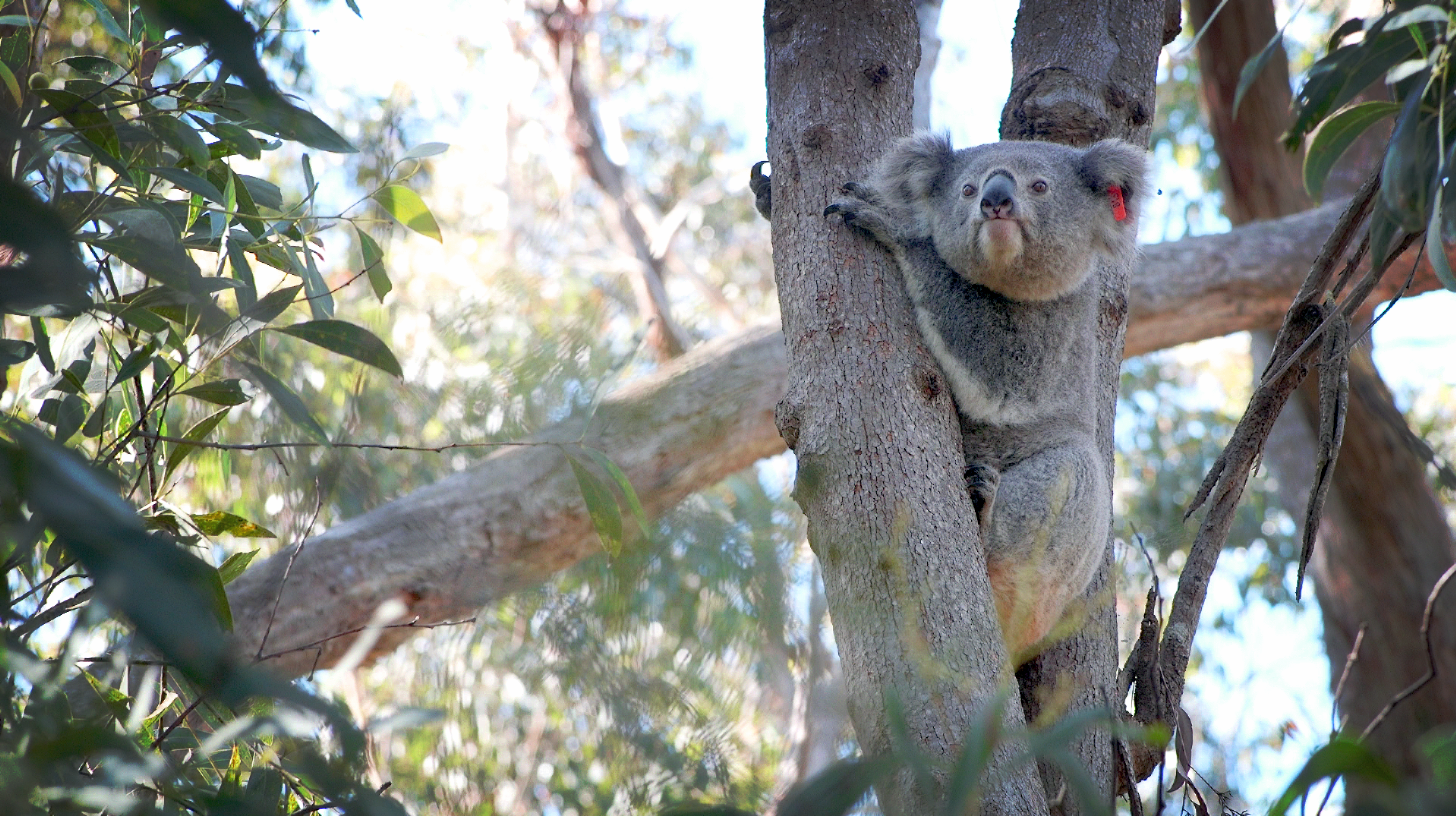What is the koala translocation program?
A key program under the NSW Koala Strategy is a koala translocation program, which is being delivered by the National Parks and Wildlife Service (NPWS). The koala translocation program involves the movement of wild, rehabilitated, or captive bred koalas to re-establish populations that have become locally extinct (reintroduction) and/or to increase the size, health, and genetic diversity of existing populations (reinforcement).
The program will not undertake translocations to mitigate risks associated with development or land clearing. Up to 8 translocations will be implemented by June 2026, which will enhance the viability of identified populations and improve the future prospects of koalas in New South Wales.
Reintroduction
Reintroduction (returning koalas to sites where they have disappeared) is an important conservation tool, because koala populations have experienced many localised extinctions caused by human-related threats. For example, the koala fur trade in the early 20th century resulted in rapid population decline and local extinctions across Australia, including south-east New South Wales. As this threat is no longer present, koalas could be successfully reintroduced to areas that were heavily impacted by the fur trade, increasing conservation outcomes for the species.
Reintroduction is required because natural barriers and fragmented habitat can limit the ability of koalas to return to sites they previously occupied. Reintroduction can establish bridging populations between colonies, which helps with migration and genetic exchange. Reintroduction will also establish populations on lands managed for conservation outcomes and protected in perpetuity. Koalas will only be reintroduced to safe areas, where the threats that caused their initial local extinction are no longer present or are properly mitigated.
For example, returning koalas to large national parks where they historically occurred will reduce the threats of dog attack and vehicle collision. Koalas may also be returned to future climate refuges where they are less likely to experience severe heatwaves and drought.

Reinforcement
Reinforcement (translocating healthy koalas to existing populations) is important for increasing the population size, health, and genetic diversity of koala populations. Many koala populations have lost genetic diversity, due to population declines and isolation, which leads to inbreeding. Loss of genetic diversity can reduce a population’s ability to adapt to emerging threats and, if not managed, may drive the population to extinction. For example, reduced genetic diversity may increase the susceptibility of populations to chlamydia.
The NPWS koala translocation program has partnered with wildlife geneticists to determine which populations have undergone genetic diversity declines, and where koalas should be sourced to successfully improve genetic diversity through reinforcement. Improving genetic diversity will help to maintain koala health and adaptability to disease and climate threats. Genetic and disease analysis will underpin all koala translocations carried out as part of the koala translocation program. Translocations will be undertaken in combination with other Koala Strategy actions, including habitat conservation, population monitoring and disease prevention to strengthen existing populations.
Translocation sites
Translocation sites will be selected using the best available science. NPWS has developed an analysis tool to assess which sites are most suitable for koala translocations across New South Wales. The analysis incorporates a range of important factors including climate modelling, habitat suitability and connectivity, current and historical koala occurrence and level of land protection. Following the analysis, detailed feasibility assessments will be carried out at highly rated sites to determine whether there are any koalas remaining in the area, the capacity of the site to support koalas, what the local threats are, and the genetic diversity and disease status of any existing populations. Source sites will be selected based on habitat similarity and proximity to the recipient site, population size, genetics, and disease risk.
The selection of both recipient and source sites will also be guided by traditional knowledge of koala occurrence and habitat preference, and the importance of the koala to local Aboriginal people. Translocations will be carried out in consultation with local communities and Aboriginal groups, and stakeholder perspectives will form an important component of site selection.
Translocation process
All translocations under the Koala Strategy will be required to develop a Translocation Proposal that is consistent with the Translocation Operational Policy (2019) and obtain a scientific licence under the Biodiversity and Conservation Act 2016. Translocation proposals will need to demonstrate how they will maximise and report on animal welfare outcomes at each stage of the translocation process.
Koalas will be captured from wild sites or sourced from rehabilitation or captive-breeding facilities. They will then be assessed by a wildlife veterinarian to determine whether they are healthy and of breeding age. All koalas will be screened for chlamydia, which is a serious threat to koala populations. Healthy koalas will be selected for translocation and transported to the recipient site. At the recipient site, translocated koalas will be closely monitored for up to 6 months. This monitoring will allow NPWS to assess each koala’s health and to ensure they are settling into the new area. Ongoing monitoring will continue in the long term to keep track of the health and size of koala populations and their habitat.